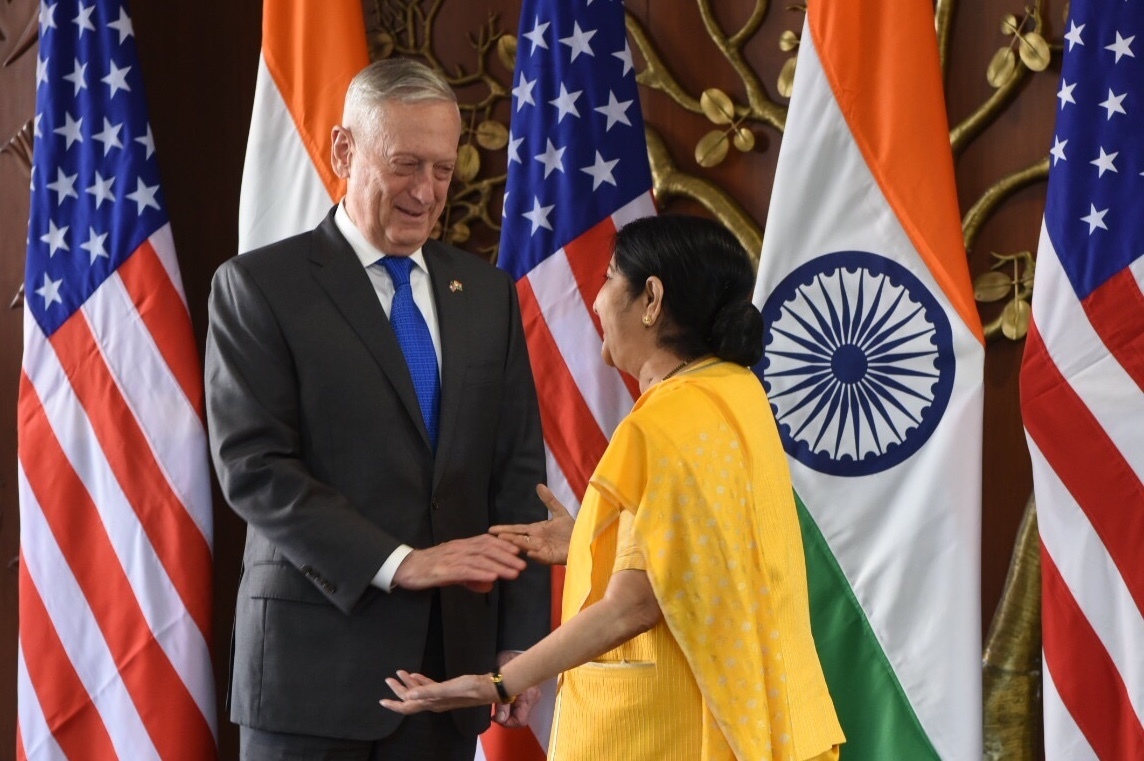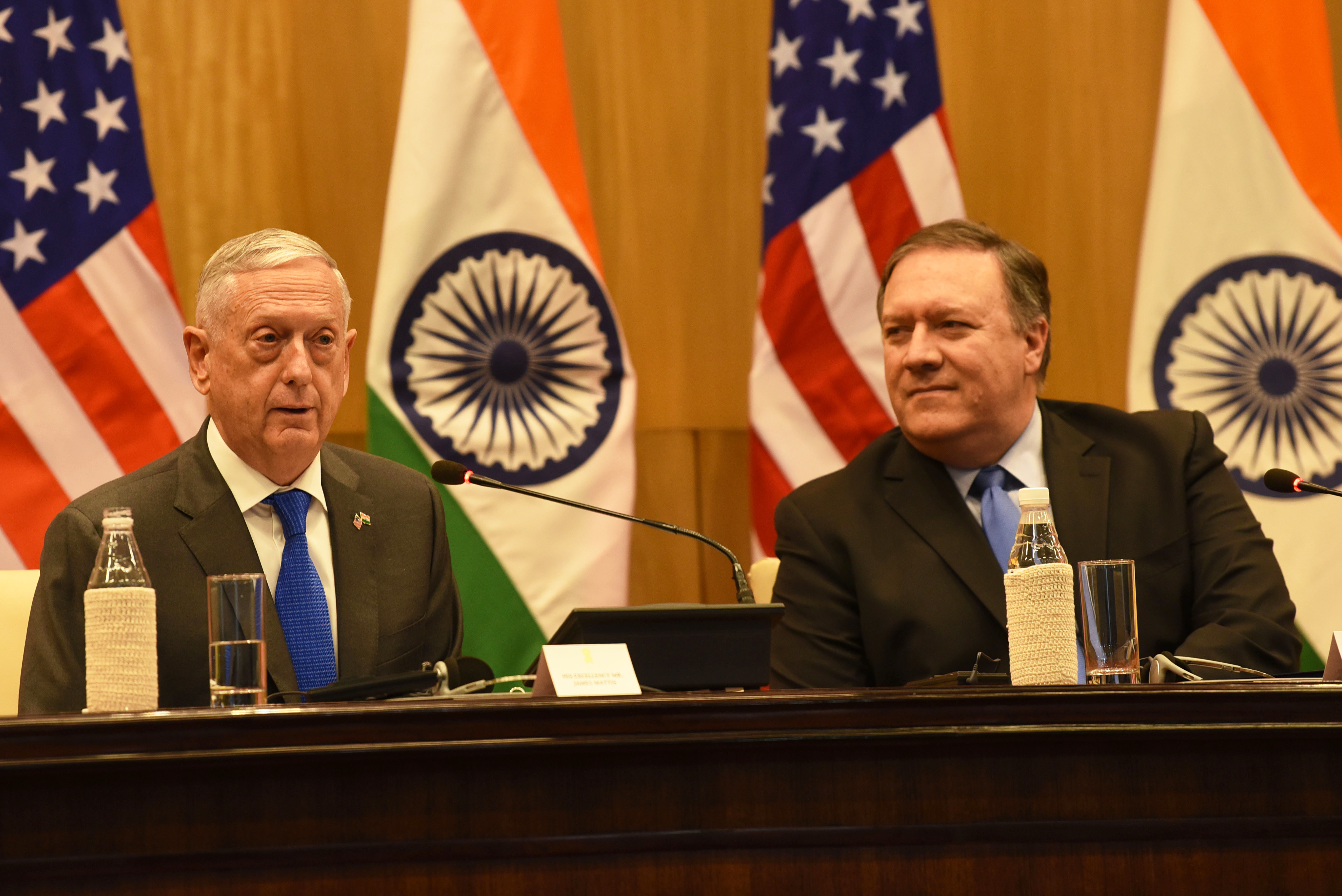
The U.S. strengthened its military relationship with India last week in signing an agreement that allows New Delhi to buy advanced American weapons, share sensitive technology and exchange military information securely and quickly.
“We will continue working together to enhance and expand India’s role as a primary major defense partner to elevate our relationship to a level commensurate without closest allies and partners,” said Secretary of Defense James Mattis speaking at a press conference in New Delhi
A visible part of the stronger military ties will be coming next year when India’s and the U.S. ground, air and naval forces will exercise near India.
“To enhance our synergies in this area, we have decided to carry out for the first time a tri-services joint exercise with the United States off the eastern coast of India in 2019. We are also putting in place an enabling framework for closer cooperation between our defense forces,” Nirmala Sitharaman, Indian defense minister, said at the same press conference.
Both stressed the need for continued maritime cooperation to secure the stability of the Indo-Pacific.
At the Hudson Institute in Washington, D.C., Cara Abercrombie, a visiting scholar at the Carnegie Endowment for International Peace, said, the announcements of the new partnership and the exercise shows “cooperation is irreversible” and shows Washington now thinks of New Delhi as a co-equal in providing security in the region.
“The unsung hero today is interoperability,” she added from the sharing of common technology to exercising together and the placing of an Indian naval officer in Central Command headquarters.
It also demonstrates to China a stronger commitment by India and the United States to exert influence in the Indo-Pacific militarily through the “Communications Compatibility and Security Agreement.”
Worrisome to India has been Beijing’s extended maritime presence close to the subcontinent. For example, China has been operating submarines in the Indian Ocean. It also established a naval base in Djibouti on the Horn of Africa and Beijing has taken over a Sri Lankan port after it fell into bankruptcy.
India also welcomed the Trump administration’s tougher rhetoric over Pakistan’s need to crack down on terrorism that was being backed up with military support to New Delhi.
Abercrombie said talks to reach this point have been going on for almost 10 years with “baby steps” taken in recent years covering logistics and aircraft. She and others noted at the Hudson Institute event that the talks for broader security cooperation had been shelved twice by the United States in recent months over trade concerns.

Secretary of State Mike Pompeo termed the new agreement as ushering in “a new era” of the relationship and gives India “a unique status” in economic, diplomatic and security relations with the United States.
He also alluded to the general understanding of how to proceed in Afghanistan, where India has provided development aid to Kabul, and the status of negotiations with North Korea over its nuclear weapons and ballistic missile programs during the New Delhi news conference.
The meeting was a first between the defense and foreign ministers of India and the secretaries of defense and state of the United States.
Left unsaid at the press conference was what steps the administration might take if India goes ahead and buys the Russian S-400 air defense. “The U.S. might impose sanctions” for doing what Turkey, a NATO ally, seems on the verge of doing as well, Alyssa Ayres, a senior fellow at the Council of Foreign Relations, said.
In addition to that possibility, Jeff Smith, a research fellow at the Heritage Foundation, said, even though India is decreasing its oil imports from Iran and increasing what it buys from the United State, it could be hit with sanctions for trading with Tehran. Since leaving the Iran nuclear agreement, the administration has threatened to impose sanctions on any nation trading with Tehran.
He noted in the past the United States “not been overbearing” when India, exercising its sovereignty, has bought arms from the former Soviet Union or traded with countries the U.S. has tense relations with.
“I feel fairly confident the United States government will not sanction India” on the Russian missiles if it goes ahead with the buy, Abercrombie said. The U.S. is India’s second largest supplier of arms. Moscow is the largest.
But despite the security harmony, the reality is trade issues between the two have become more fractious in the last eight months, Ayres said. The administration cites the bilateral trade deficit with Washington as a matter that must be resolved. It has also levied tariffs on steel and aluminum coming from India and other countries.
Kapil Sharma, vice president at North America Wipro, an information technology firm, said, “The tension in the relationship” is rising “because they are tackling tough issues” from cutting deficits to growing jobs in both countries. The easier issues had been resolved years ago, he added. He termed the trade relationship as “dynamic.”





